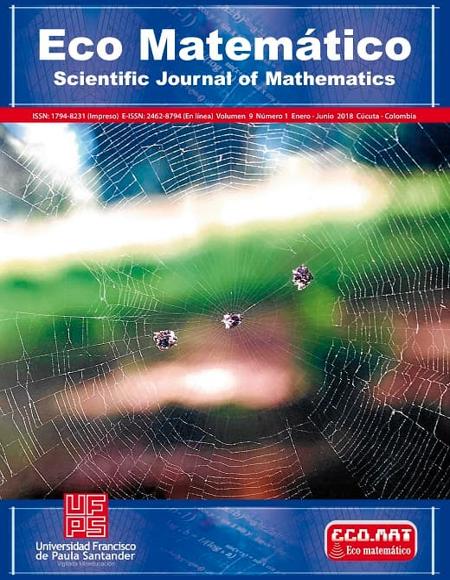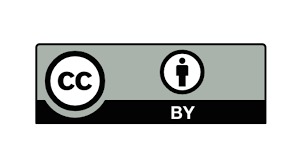How do Colombian textbooks promote dimensional change in relation to the area of polygonal regions?
¿Cómo promueven el cambio dimensional los libros de texto colombianos en relación con el área de regiones poligonales?
Main Article Content
The dimensional change in the way of seeing on the two-dimensional figures is a basic operation for the development and understanding of mathematical tasks, but, for the students the incorporation of this operation is complex, even impossible to do. The study of the dimensional change must be an object of reflection. The area of polygonal regions and the textbooks allow us to understand how the dimensional change is promoted in the classroom. This research work analyzes how textbooks of the three main publishersin south-western Colombian arouse, in the first cycles of compulsory basic education, the incorporation of dimensional changesto find the area of polygonal regions. An amount of 1281 tasks were analyzed. Two classes of dimensional changes were identified: Fixed and Operative, where the first dimensional change was the most considered. Research shows that textbooks propose limited opportunities for dimensional change to be apprehended. Educators must design tasks to complement the tasks exhibited by the books, consequently, so they must appropriate a visual theory that allows them to make the relevant decisions
Downloads
Article Details
Cobo, B. y Batanero, C. (2004). Significado de la medida en los libros de texto de secundaria. Enseñanza de las Ciencias, 22(1), 5-18.
Duval, R. (2017). Semiosis y pensamiento humano. Registros semióticos y aprendizaje intelectuales. Trad. realizada por Myriam Vega Restrepo, (2ª ed.). Cali. Colombia: Artes Gráficas Univalle.
Duval, R. (2011). Ver e ensinar a matemática de outra forma, Brasil, Sáo Paolo: Editorial PROEM.
Duval, R. (2004). Cómo hacer que los alumnos entren en las representaciones geométricas. Cuatro entradas y…una quinta. En M.C. Chamorro (Ed), Números, fórmulas y volúmenes en el entorno del niño (pp. 159-188). Instituto Superior de Formación del Profesorado. Ministerio de Educación y Ciencia. Madrid: Sociedad anónima de fotocomposición.
Duval, R. (2003). Voir en mathématiques. En E. Filloy (Ed.), Matemática educativa. Aspectos de la investigación actual (pp. 41-76). México: Centro de Investigación y Estudios Avanzados del IPN.
Duval, R. (1998a). Geometry from a cognitive point of view. En C. Mammana y V. Villani (Eds.), Perspectives on the Teaching of Geometry for the 21st Century. (pp.37-51). Dordrecht. Netherlands: Kluwer AcademicPublishers.
Inan, H.Z. y Dogan-Temur, O. (2010). Understandingkindergartenteacher´s perspectives of teaching basic geometricshapes:aphenomenographicresearch. ZDM. The International Journal onMathematics Education, 42(5), 457-468.
Inan, H.Z. y Dogan-Temur, O. (2010). Understandingkindergartenteacher´s perspectives of teaching basic geometricshapes:aphenomenographicresearch. ZDM. The International Journal onMathematics Education, 42(5), 457-468.
González, M. T y Sierra, M. (2004). Metodología de análisis de libros de textos de matemáticas. Los puntos criticos en la enseñanza secundaria en España durante el siglo XX. Enseñanza de las Ciencias, 22(3), 389-408.
Marmolejo, G. (2005). Análisis del Tópico de Geometría y Medición. En Pruebas Censales y Formación de Pensamiento Matemático en la escuela. Universidad del Valle. Cali. Colombia, 27-44.
Marmolejo, G-A y González, M-T (2015). El área de superficies planas en el campo de la educación matemática. Estado de la cuestión. REIEC, 10(1), 45-57.
Marmolejo, G. y González, M. (2013). Función de la visualización en la construcción del área de figuras bidimensionales. Una metodología de análisis y su aplicación a un libro de texto. Revista Integración, 31(1), 87-106.
Marmolejo, G. y Vega, M. (2012). La visualización en las figuras geométricas. Importancia y complejidad de su aprendizaje. Educación Matemática, 24(3), 9-34.
Ministerio De Educación Nacional. (2006). Matemáticas. Estándares Básicos de Competencias. Bogotá, Colombia: MEN.
Ministerio de Educación Nacional (1996). Análisis y Resultados de las pruebas de Matemáticas - T.I.M.S.S./96. Bogotá. Colombia. Creamos Alternativas
Pepin, B., Haggarty, L. y Keynes, M. (2001). Mathematics textbooks and their use in English, French and German classrooms: a way to un derstand teaching and learning culture. ZentralblattfürDidaktik der Mathematik, 33(5), 158-175
Schmidt, W.H., Jorde, D., Cogan, L.S., Barrier, E., Gonzalo, I., Moser, U., Shimizu, Y., Sawada, T., Valverde, G., Mc Knight, C. Prawat, R., Wiley, D.E., Raizen, S., Britton, e.D. y Wolfe, R.G. (1996). Characterizing pedagogical flow. An investigation of Mathematics and Science in Six Countries. Dordrecht: KluwersAcademicPublishers.







